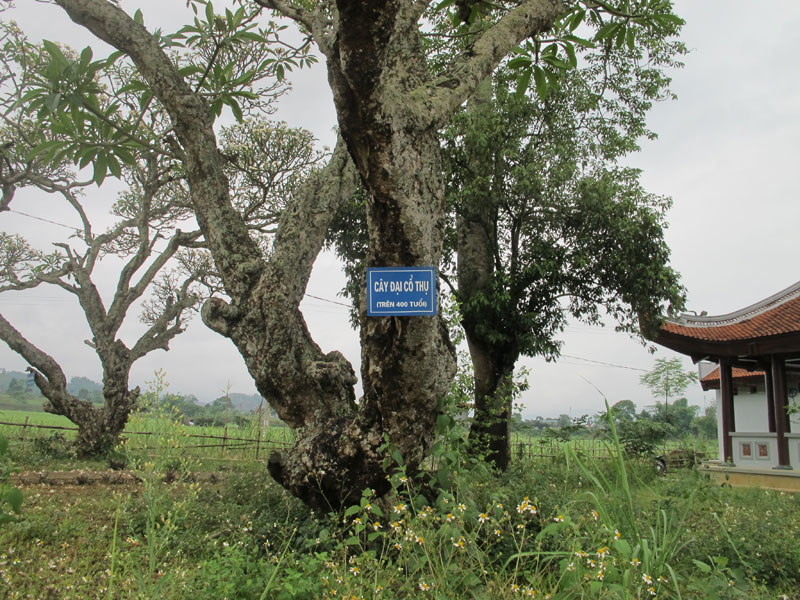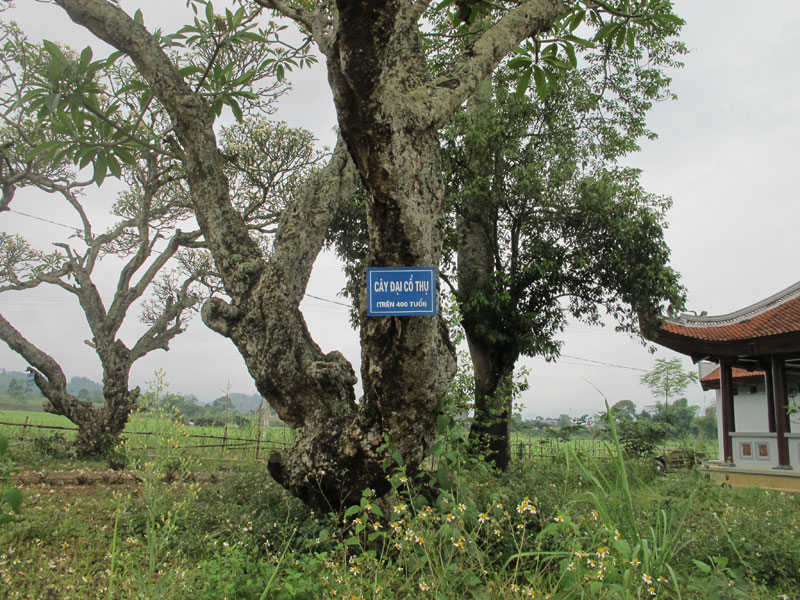
(HBO) Owning many beauty spots, historical and cultural relics associated with the process of revolutionary struggle of the local people, Cao Phong district has long become one of the tourist attractions in and beyond the province. Therefore, the management, protection and promotion of relics are always the great interest of the district.

The 400 – year - old great ancient tree at Quan Ang Pagoda,
Tan Phong (Cao Phong)
There are no relics at the provincial and
district levels, but Cao Phong has four relics that have been granted the
national monument recognition. They are cultural relics in Khanh Pagoda, Yen
Thuong Commune; Quan Ang Pagoda, Tan Phong Commune; Cu Chinh Lan Heroic
Monument located in Binh Thanh Commune and the Dau Rong Complex Mountain Cave
(Cao Phong Town). Béides, the district has many intangible cultural features
bearing the great national identity as a part of the "Hoa Binh
Culture".
Mr. Quach Van Ngoan, the Vice Chairman of Cao
Phong People's Committee said: In order to protect the relics and monuments,
the People's Committee has strengthened the direction of professional
departments, communes and towns to perform the protection and embellishment of
historical relics in the area. Over the past three years, it has been estimated
that 17 billion VND has been raised to renovate and restore the landscapes to
serve the tourism development.
In order for the monuments to last
forever and to promote the value, Cao Phong District recommends that the
Department of Culture, Sports and Tourism annually organize training courses on
tourism and management, restoration of the relics to raise the professional
level for cadres who are in charge of culture and tourism there. Together with
the temple owners, Bo Temple in Thung Nai has been upgraded in the equitization
interest. The Provincial People's Committee is requested to continue investing
in constructing an inter-communal road in Thung Nai - Bac Phong with a tour
route in the area. Particular attention is paid to replenishing the capital to
restore and renovate the national historical monument - Cu Chinh Lan Heroic
Monument). At the same time, adding fund to the construction of Mo Muong - Hoa
Binh in Tan Phong Commune will be the basis for the district to manage, protect
and promote the historical and cultural values of the relics in the area.
Located just a 20-minute drive from Hoa Binh City, Ora Hill Farmstay & Glamping Hoa Binh is a captivating new destination nestled in Mo hamlet, Bình Thanh commune, Cao Phong district. Combining farming with leisure, this tranquil retreat is perfect for those seeking balance, joy, and an immersive experience in the expansive beauty of nature.
Muong Bi - Tan Lac is renowned as one of the four famous Muong regions in Hoa Binh province. Blessed by nature with a favourable climate and stunning landscapes, Tan Lac holds great advantages for tourism development. The local tourism industry has made remarkable strides in recent times thanks to the attention and support from the local authorities and sectors.
With its strategic location, well-developed transport network, and diverse soil and climatic conditions, Hoa Binh is emerging as a must-visit destination in Vietnam's northwestern tourism corridor. The province boasts numerous attractions, including the Kim Boi hot springs (Kim Boi district), the Dau Rong cave complex (Cao Phong), the Mai Chau valley (Mai Chau), and the iconic Hoa Binh hydropower plant.
The northern mountainous province of Hoa Binh has been listed among the 71 most beautiful places to visit worldwide by the prestigious US travel magazine Condé Nast Traveller.
Hoa Binh province’s rich natural and cultural resources position it as a prime location for developing community-based tourism (CBT). In recent years, support from central and provincial policies, as well as assistance from non-governmental organisations, have encouraged local ethnic minority and mountainous communities to actively engage in the sector.



